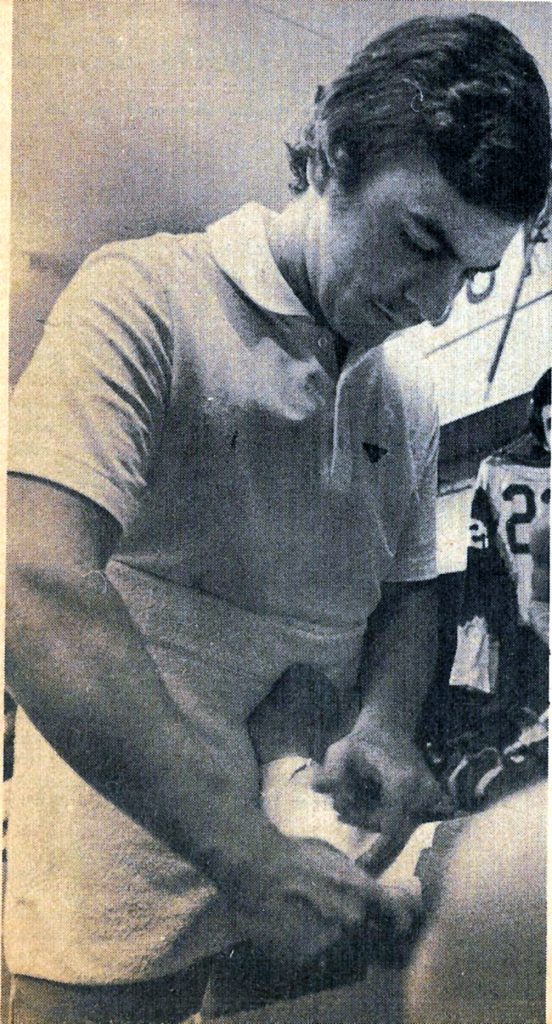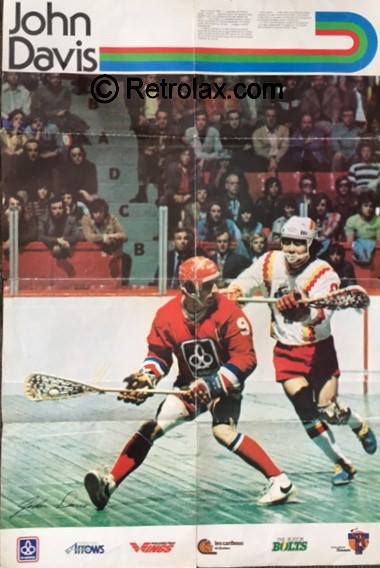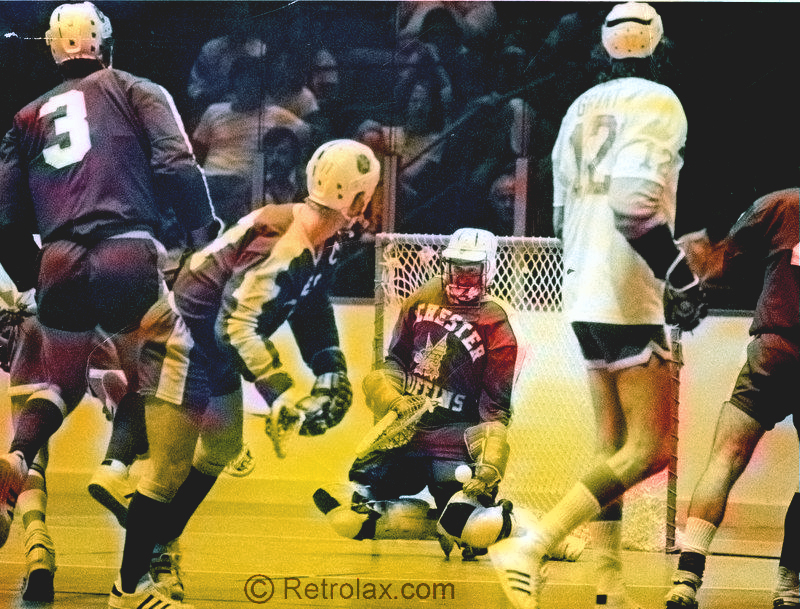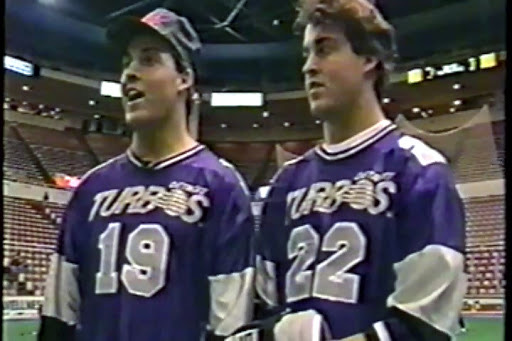by George Gross, Sports Editor, Toronto Sun
When Father Neil Smith asked Joe Piccininni Jr. to act as student manager for St. Michael’s midget hockey team, little did he know that the son of the Toronto alderman would wind up as trainer of the Toronto Tomahawks in the National Lacrosse League. Young Joe was in Grade 11 at St. Mike’s when Father Smith got him interested in the job as student manager and before you could say ouch, he was also looking after the players’ injuries.
“I didn’t know much about the duties of a trainer,” said Piccininni, “except for a short St. John’s Ambulance course as a Boy Scout. But when the players started to get hurt, I began to look after them the best I could. “The following year in Grade 12 1 became the trainer of St. Michael’s Buzzers and one of the players was Dave Gardner. Then I really became involved in the training profession. I studied books and I learned most from Argo trainer Mert Prophet, who held a special clinic for trainers, and from Maple Leaf physiotherapist, Karl Elieff.”
Just how serious young Mr. Piccininni became about the job was evident by his enrolment in physiotherapy at the University of Toronto, where he’s a third-year student. Piccininni can thank Sun reporter John laboni for the fact he branched out as a laorosse trainer. When the Toronto Shooting Stars were looking for a trainer, laboni mentioned to Piccininni there was a job available. Young Joe stayed with the Shooting Stars for two years.
“Bob Hanna was the coach of the Stars and when he became assistant coach of the Tomahawks, he asked me if I was interested in the position with the team,” said Piccininni. “I agreed immediately for two reasons one, I like lacrosse and, two, I needed a summer job to help pay for my studies at U of T. It has worked out well for me, mainly because I have a very capable partner in Tom Mayhew.”

Treating injured players in professional lacrosse is only a small part of Piccininni’s duties, despite the fact injuries in pro lacrosse are numerous mainly because of the increased number of games and longer schedule than in amateur lacrosse. And, speaking of schedules, those who may envy Piccininni his fob might change their minds upon hearing what a day in a pro lacrosse trainer’s life looks like.
It was last month, the day of an away game against Philadelphia that Joe Piccininni got up at 7 in the morning to head out for York University, where the team had a practice session at 10:30 am. As soon as the last player showered and left the dressing room, Joe had to pack all the equipment on a truck and
head for the charter plane. On arrival in Philadelphia around 5 in the afternoon, Piccininni headed straight for the arena to unpack the equipment and to get ready for his taping duties. That is taping ankles, wrists, hands and, in some instances, shoulders and thighs.
That takes him until about 7:30, by which time the team heads out for a warmup session, which Joe prepares ice packs, Gatorade and whatever else he needs at the bench during the game. After the game it’s packing time again, a rush trip to the airport and return to Toronto by about 1 : 30 am. While the players leave for home, Joe drives either to York University or Maple Leaf Gardens (depending where the team practices that day), dries the equipment and prepares a new set for the workouts. He gets home by about 3 am. Unless my mathematics are wrong, he had just finished a 20-hour day.
Trainers, usually are closer to players than coaches or owners and Joe Piccininni is no exception. If there are any beefs from them, Joe hears it first. Piccininni, who’ll graduate in 1976 and would like nothing more than be part of Canada’s Olympic medical team for the 1976 Olympics in Montreal, acts as a trainer in other sports as well. In fact he was the trainer of the Markham Royals Junior B team when it trounced the touring Russians 4-1.
Among his more pleasant duties is his position as trainer at the U of T’s women’s athletic department. But the 22- year-old doesn’t view it that way at all. “I have a trainer’s room next to the dressing room and if the girls need attention, they come and see me,” explained Piccininni. “Sometimes I’m asked to go to the dressing room to tape a girl and, true, some of them are not fully dressed. But I don’t view them as girls in the dressing room, I see them as athletes. “I think it all depends on the maturity of the girls and the trainer. My approach is more medical than male. Besides when you tape a girl’s wrist in one corner, you really can’t watch a girl getting changed in the other corner. “I have a very good rapport in that respect with all our girl teams, may they be hockey or basketball players, or swimmers. The objective is to win the games and look after the players’ injuries, not socializing. ‘
Has anything embarrassing ever happened to him regarding his position as trainer of girls’ athletic teams? “No, not really,” replied Piccininni. “Perhaps the most embarrassing thing is to explain my job to people, Usually the conversation goes something like this :
“What are you doing Joe? “
“I’m a trainer”.
“Of the U of T football team?”
“No, I work for the women’s athletic department. ”
“Oh yeah, Joe, do you need some help?”
“You see, that’s what I mean. People cannot understand that to a trainer, just as to a doctor, women athletes are the same as male athletes. Socializing has no place in the dressing room. “
Yes, Dr. Piccininni, I understand.






